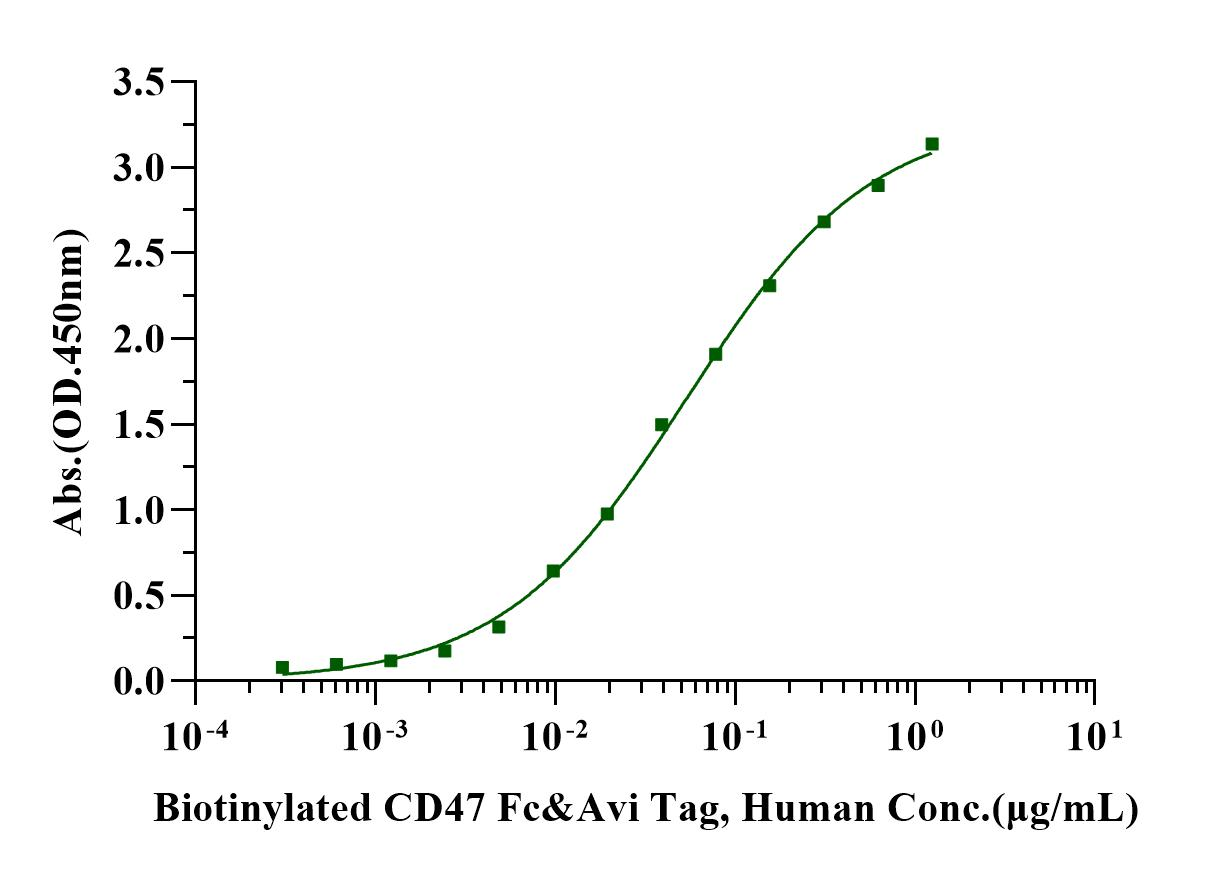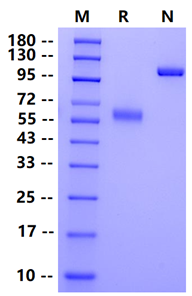Gln19-Pro139, with C-terminal Human IgG1 Fc & Avi Tag QLLFNKTKSVEFTFCNDTVVIPCFVTNMEAQNTTEVYVKWKFKGRDIYTFDGALNKSTVPTDFSSAKIEVSQLLKGDASLKMDKSDAVSHTGNYTCEVTELTREGETIIELKYRVVSWFSPIEGRMDPKSSDKTHTCPPCPAPELLGGPSVFLFPPKPKDTLMISRTPEVTCVVVDVSHEDPEVKFNWYVDGVEVHNAKTKPREEQYNSTYRVVSVLTVLHQDWLNGKEYKCKVSNKALPAPIEKTISKAKGQPREPQVYTLPPSRDELTKNQVSLTCLVKGFYPSDIAVEWESNGQPENNYKTTPPVLDSDGSFFLYSKLTVDKSRWQQGNVFSCSVMHEALHNHYTQKSLSLSPGKGLNDIFEAQKIEWHE
1、Brown E J. et al. (2001) Integrin-associated protein (CD47) and its ligands. Trends Cell Biol. 11(3): 130-135.
2、Oldenborg P A. (2004) Role of CD47 in erythroid cells and in autoimmunity. Leuk Lymphoma. 45(7): 1319-27.
3、Kaczorowski D J. et al. (2007) Targeting CD47: NO limit on therapeutic potential. Circ Res. 100(5): 602-603.
The leukocyte surface antigen CD47 is also known as OA3, integrin-related protein (IAP), and protein MER6. Human CD47 is an integral membrane protein consisting of a 123-amino acid (aa) extracellular domain (ECD) and a single Ig-like domain, five transmembrane regions with short insertion loops, and a 34-aa C-terminal cytoplasmic tail. CD47 is widely distributed in normal adult tissues. CD47 is a receptor for SIRPA, and binding to SIRPA prevents the maturation of immature dendritic cells and inhibits cytokine production by mature dendritic cells, thereby protecting cancer cells from elimination by phagocytosis. The interaction between CD47 and SIRPG mediates cell-cell adhesion, enhances superantigen-dependent t cell-mediated proliferation, and co-stimulates t cell activation. CD47 is highly expressed in a variety of solid tumor cells and malignant hematological tumor cells, and its expression level is positively correlated with disease progression.

Immobilized SIRP-α Fc Chimera, Human (Cat. No. UA010005) at 2.0μg/mL (100μL/well) can bind Biotinylated CD47 Fc&Avi Tag, Human (Cat. No. UA010444) with EC50 of 45.92-64.38 ng/mL.
